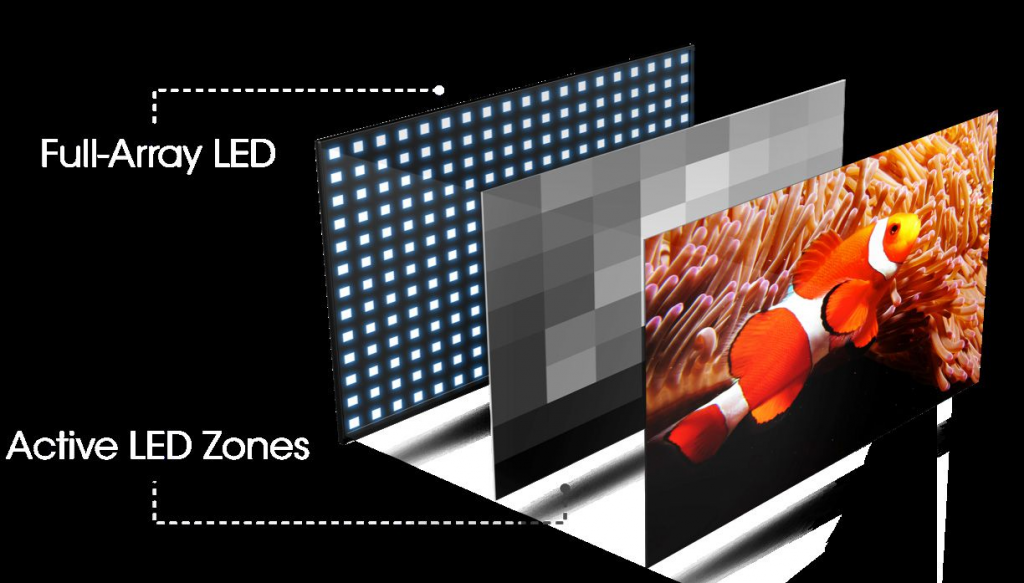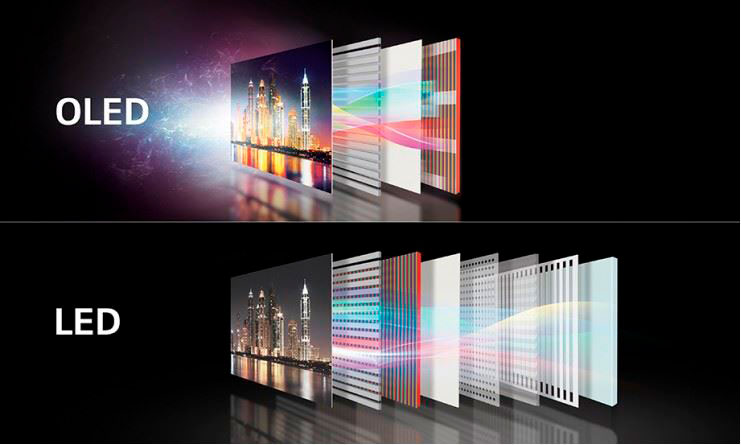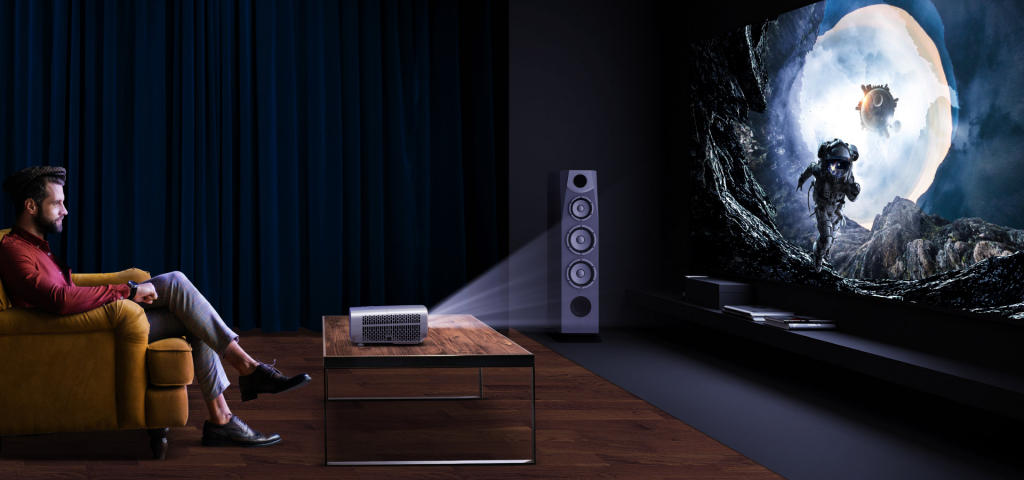For Many First-Timers, 4K Ultra High Def LOTR/Hobbit Causes a Need for Upgrades, so Take the Deep Breath Before the 4K Plunge

From Guest Columnist Oscar Villanueva; a comprehensive breakdown of 4K Television tech to help us understand and prepare for the upcoming 4K Releases of the LOTR and Hobbit Trilogies:
So here we are now near the end of a very agitated 2020, almost 20 years after the original cinema release of The Fellowship of the Ring, and we have yet another home video release of our beloved six-film Middle-earth Saga around the corner. It’s almost as if it was coming back to our aid, to remind us there’s still light out there that no shadow can touch, and is worth fighting for. But what’s different now is that it will do it with a new acquired dimension.
It seems home entertainment gear changes about every ten years or so, and sometimes we feel we can’t keep up with it, or maybe we are just not willing to since of course there are real priorities out there especially in these troubling days. And yes, we certainly don’t need to, but there’s also the variable of how much the uptick of that technology really is in play here, so for many of us that may be the actual determining factor.
So now we have this 4K technology almost everywhere, and along with it we often hear or read terms such as HDR, Dolby Vision, Dolby Atmos, and also a weird-sounding thing called “Wide Color Gamut,” and the only thing it achieves is adding more to our already confused consumer minds. We only want to enjoy the movies and shows we love without the troubles of even thinking where to start.
Thankfully as we are about to find out none of it is that complicated in reality, especially since all of those different technologies are out already there in our favorite stores, and what’s even better they often come in one single package, so the only place drama belongs in that regard is still movies themselves. Don’t worry we’ll keep it simple, but first let’s check some basics.
Full HD
We’ve had FULL HD resolution for almost 15 years and we have used the term for all types of displays such as cinema, televisions, computers, even cellphones and most recently streaming services. Full HD in display gear means a high resolution image composed of 1920 pixels (horizontally) by 1080 pixels (vertically). In short is what blu-ray discs and players brought us the past decade.
4K
This is the “newest” standard, or at least is increasingly becoming it as it is being adopted more and more by manufacturers and streaming services. 4K is a very high resolution image composed of 3840 x 2160 pixels, which in theory is four times Full HD, at least for the vertical part.
HDR
Here is where we enter the actual “new dimension” of 4K display technology, and no, we are not talking about 3D here nor will. HDR is a term we may have seen once in a while in professional photography gear, and maybe some cell phones, but although is the same basic concept, its application in home entertainment is totally different. It means High Dynamic Range hence HDR and it refers to difference, or range, between the brightest and the darkest part of the image. But then starts the interesting part; we are used to experience bright and dark sections of a single image, yes, but basically television sets always achieved this thanks to a combination of color and brightness, so when there’s the need to display something very bright lets say a sunset, that section of the screen turned very white or almost white, with little to non extra brightness from the tv, and of course the effect was successful, but for that to constantly work darkness could never be too dark and brightness could never be too bright, that is now called SDR or Standard Dynamic Range. Now what HDR tech allows is to have real deep darkness and real high brightness in one single shot giving images more of a real life quality and therefore a much more visceral feeling.

Dolby Vision
This one is just a refined form of HDR, developed by Dolby Laboratories, and maybe we should say it’s the ideal form of HDR. The issue with HDR is that it is not a defined standard in the sense that different movies are mastered at different luminance levels and this mastering may not fit our screen perfectly causing sometimes shadows or highlights eat up fine detail, this issue is also known as black crush and white clipping respectively. Well, none of this happens with Dolby Vision since basically it “communicates” with our display so it can set luminance and dark levels according to our TV’s capabilities, delivering the best HDR experience for our gear without any loss of detail.
Nits
Nit is the standard unit in which luminance levels of light sources are measured with, and this of course includes display sets. Common TVs have always been as bright as 300 nits, but now they can get to 500 nits in standard modes. But now with HDR they can get even higher, or should we say must? For a good HDR/Dolby Vision performance as designed a display must be capable of at least 700 nits of brightness, although ideally it would be about 1000 to fully appreciate the wide range of brightness and because is where the majority of films are mastered at. The only problem is that for a Tv to get a HDR certification it only needs to be able to reproduce the HDR algorithm but not necessarily to reach the levels of luminance, or nits, needed for a good HDR experience.
Wide Color Gamut
Also known as WCG this specification implies a wider range of color and tonalities. Whereas the full range of HD signal have always been the code named REC.709 color gamut, modern 4K UHD displays especially ones with HDR capabilities tend to reach the much wider BT.2020 color gamut, and although no display to this date can support the full spectrum of the BT.2020, they do reach the smaller DCI:P3 gamut which is contained in the BT.2020 one and is wider than REC.709 and is where the majority of UHD movies ara mastered at.
Dolby Atmos
It’s a relatively new enhanced audio format also developed by Dolby Laboratories that allows extra channels or speakers to fire up from above the listening position. This means you can place speakers in your ceiling, or ones that fire up to the ceiling and bounce back to you, to create this dome-like environment of sound around you, making it an even more immersive experience.
Now, these are some of the basics but they are just half of the equation for there’s still something that would materialize all that theory; a display of course. In the past it may have been more difficult to look for something akin to our precise needs as we were used to picking without knowing more beyond what we saw in stores. But nowadays not only there are more display brands than ever but also information is out there in the form of written reviews and youtube videos reviews, and they all get there earlier than a wizard so we can really know what we are going to get before we get it, and that’s saying a lot.
So, then, what do I need in order to maximize enjoyment of the upcoming Middle-earth 4K releases?
Well, ideally it would be a display whereas be a TV set or a home projector that includes as much of the previous specifications as possible. There are a number of technologies available right now and for different “pocketses,” so once we decided to upgrade our home theater gear it shouldn’t be too difficult to find something that accommodates us.
Here are some display types we have within our reach:
LCD TV
This has been the basic flat TV for years now. This type of TV is traditionally lit up by a series of light tubes mounted behind the screen. Along with the now extinct Plasma TV they made flat and wider panels possible.
LED TV
An LED TV is technically similar to a LCD TV but this one is backlit by LED (light-emitting diodes) which are usually placed in a row on the left and right edges behind the screen.
Limitations: Common issues with both types of TVs include very uneven brightness and light leaking from the edges.
Full Array LED
This type of TV is the best of the LED family since it can light up an specific segment of the screen while keeping the rest darkened thanks to its bigger number of led lights evenly placed throughout the back of the screen. It can achieve very high levels of luminance making HDR and Dolby Vision really work as were designed. This Full Array Local Dimming technology as is also known is commonly found in the ones marketed as Quantum TVs or QLED.
Limitations: One of the problems with having lights behind the screen is that no matter size or number of those lights, there always be some leaking of brightness outside the zone that is requiring that specific luminance, this is called Blooming. This may or not be noticeable to everyone, and although it happens it isn’t that distracting nor detract the HDR effect, specially in a well lit room.

OLED TV
This TV is composed of organic light-emitting diodes thus OLED, and that means each pixel emits its own light individually when stimulated by electricity. So what happens when there’s no need for color in the image? Well, it turns completely off creating absolute blackness and therefore producing what is called Infinite Contrast. Not only that but since each pixel can turn on and off independently luminance is perfectly delimited to the part of the image that needs it which is why OLED gives us the best image possible to date. While full array local dimming TVs can make images pop thanks to their high light output, OLEDs do it by going negative; absolute black giving images a level of contrast with an almost tridimensional pop feeling to them.
Limitations: Of course no tech is perfect, so here we have two main issues with OLED displays related in fact to its organic components. First they can’t get too bright, at least not as much as a LED TV because in doing so they run the risk of burning pixels out, which leads us to the second issue; image retention. If a static image is displayed for too long it can be burned into the screen and kept for hours, days or even weeks if not permanently. There are solutions now to avoid this problem included in more modern OLED TVs, but it’s something the technology can’t still get rid of completely.

Projectors
These may come as a surprise for some people because we are so used to the idea of a projector only belonging to theaters or classrooms, but now by 2020 home theater projectors have increasingly become part of the repertoire of possibilities for our private cinema and gaming entertainment. Projectors nowadays have become more compact, more advanced and more affordable than ever, and of all types of displays we’ve mentioned they still deliver the most cinematic and immersive experience of all thanks to that cinema size screen they produce. And yes, they come with 4K resolution and support HDR too.
Limitations: Projectors are very different type of technology altogether as they produce images using a beam of light, which means that even dark areas of the screen will have to be delivered using some light, so even the darkest areas will not get as dark as a good full array tv, much less an OLED, and it’s because of this and the fact that we are watching reflected light instead of a source of light that HDR rendering is fairly limited compared to TVs. Also affordable projectors and even not so affordable are limited to REC. 709 color gamut. But make no mistake, with its high level of contrast within a dark room and (preferable) darkened walls and ceiling and a good reflective surface (screen) projectors deliver the most breathtaking experience with very natural images and very natural HDR and color rendering, all while being very pleasant to the eyes because let’s be real for a moment here, nobody’s eyes could actually bare a 120″ screen shooting direct light at them.

“Now… what does it say about *recommendations* my precioussss?”
Well In the end we get what our real life priorities allow us and thanks to the increasingly growing home video market, options are richer than ever and although there are enough of them for every pocket out there we will be focusing on just some of the top quality and more complete displays sets that are also somewhat “pocketses-friendly” at the same time, more of a mid range budget sets. The point being starting from here everyone can enjoy the new Lord of the Rings and Hobbit releases without losing any of the 4K advantages image quality wise.
Full Array LED TV recommendation:
Hisense H9G (55”65”)
TCL Q635 (55”65”75”)
Both of these models give you one of the bests budget friendly TV performances of recent years. Not only both support HDR and Dolby Vision, but they can output as much as 1000 nits of luminance gloriousness and in the case of the Hisense even a bit more than that delivering truly breathtaking 4k HDR/Dolby Vision images. Both are great at streaming too, with the TCL also being more game orientated. Oh and the Hisense H9G also comes with an integrated Dolby Atmos system.
Worth keeping an eye on: SONY Bravia X900H: One of the most popular full array LED displays to hit the market in 2020. This full array display delivers stunning, high-end HDR and Dolby Vision at a fairly affordable, mid-tier price point suitable for most people not concerned with OLED.
If we want to spend a little less then the Hisense H8G would be a great choice. It can output about as much as 700 nits which is still pretty good for HDR/Dolby Vision performance.
Also Note: We know Samsung is one of the most, if not *the* most popular QLED TVs manufacturer on the market, but although it’s really good its flagship TVs are the only ones that do justice to HDR representation but those are neither affordable enough nor a complete package as the brand don’t’ support Dolby Vision in any of their sets.
OLED TV recommendation:
In this category we only had one contestant given we are focusing on what’s mid-range affordable while keeping good quality and complete offerings.
VIZIO OLED H1 (55″65″)
The first OLED TV by Vizio comes not only with maybe the most budget friendly price for an OLED but also comes with just the right bunch of specifications that includes HDR and Dolby Vision. Of course being an OLED TV It can’t get as bright as a LED TV but it certainly produces an outstanding very popping image thanks to its infinite contrast ratio exclusive of this type of technology.
Worth keeping an eye on: Sony A9G OLED and LG C9X/CX. These are of course more expensive but one cannot know what those Black Friday winds can bring right to us.
Also Noting: Of course remember an OLED is prone to burn in or image retention and the more expensive models are the ones that have better protection against this.
Projector recommendations:
EPSON Home Cinema 4000
Optoma UHD60
BENQ HT2550
BENQ TK800/800M
Worth keeping an eye on: BENQ HT3550, EPSON UB5050/6050. Both of these projectors are a bit more expensive but their performance is also a bit better delivering great black levels and a wider color gamut.
Also Note: These are some of the most affordable home theater projectors. ‘Affordable’ may be a very relative term here, but these are as budget friendly as they can get and still deliver maybe the most cinematic experience possible in the intimacy of home. All of those also deliver true 4K images thanks to shifting technology and also produce beautiful HDR rendering. We should note that there’s no projector at the time that support Dolby Vision, just HDR/HDR10 but it sure looks gorgeous.
Lastly, we cannot simply walk into a 4K blu-ray collection without a 4K player, so here are some of the best affordable 4K player on the market right now:
Sony UBP X700
Sony UBP X800
Panasonic DP UB450
Worth to keep an eye on: Panasonic DP UB820, which is more expensive but delivers amazing image performance.
Also Note: These 4K players can play both HDR and Dolby Vision which no console is able to at the present time.
TheOneRing.net extends gratitude for the effort of our Guest Contributor, Oscar Villanueva, whose passions include filmmaking, cinema, home theatre gear and of course LOTR, can be followed on Instagram @oscarilbo and Twitter @Oscrilbo [a play on Oscar + Bilbo]


